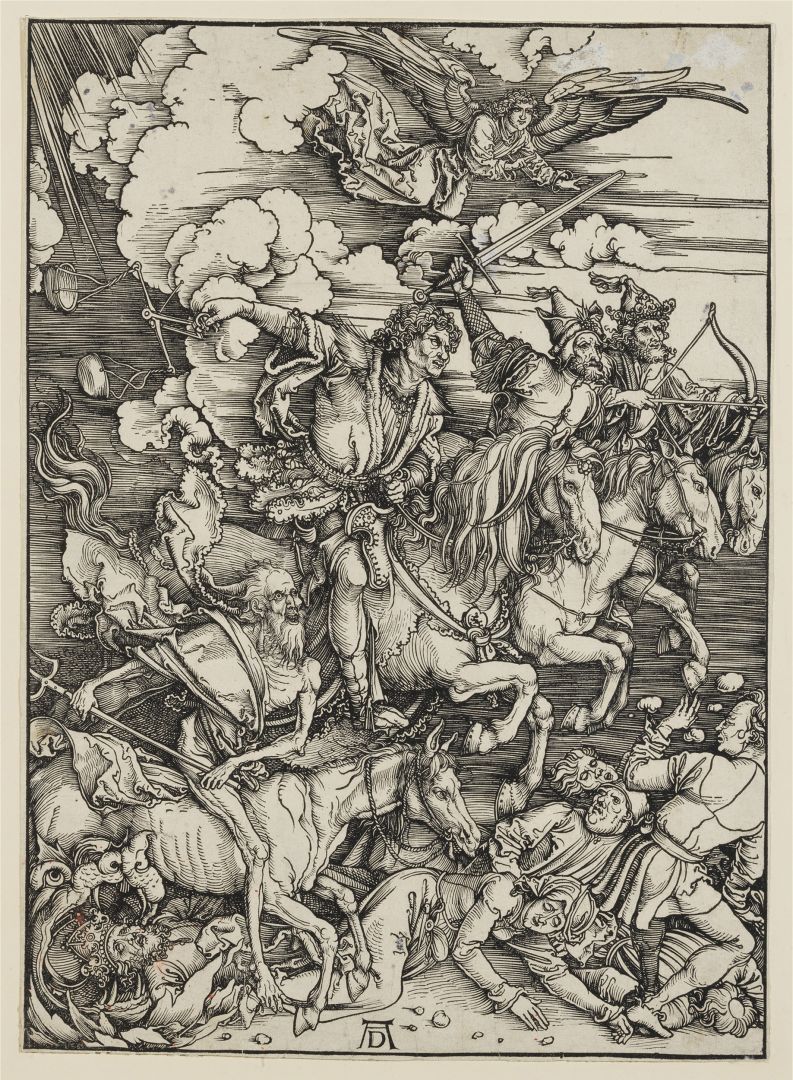
The Four Horsemen of the Apocalypse
From the Apocalypse Cycle
c. 1497–98
Woodcut
394 × 285 mm
Purchase, 1896
On his return from Italy, Dürer started to work on the Apocalypse cycle, his most acclaimed series as a young artist. The cycle including sixteen woodcuts is by far the best-known and the most powerful representation of the Apocalypse in art history. The artist published it first in 1498 as a book with whole-page woodcuts in separate German and Latin editions; in 1511 a new Latin edition came out with a new frontispiece. The compositions are illustrations of scenes from the last book of the New Testament, Revelation. The Four Horsemen of the Apocalypse depicts the event when the Lamb with seven horns and seven eyes takes the sealed book from God and opens the first four seals. Upon the opening of the first seal, a rider on a white horse enters with a bow in his hand and goes out to conquer. When the second seal is opened, a rider on a red horse comes with a sword in his hand, to take peace away from the earth. The third rider gallops along on a black horse, with scales in his hand, raising prices and famines. The fourth rider is Death himself, riding on a pale horse, representing the underworld.